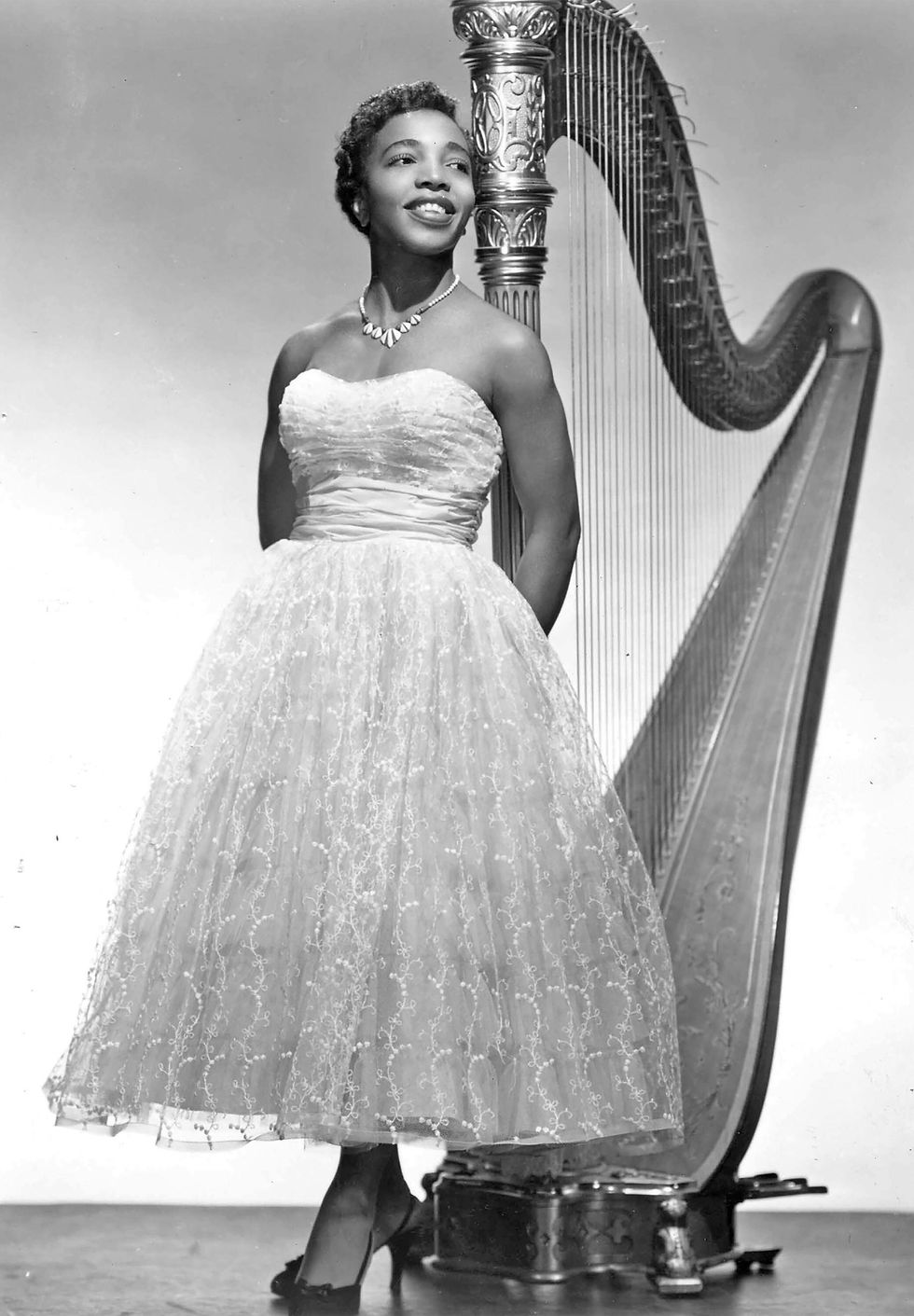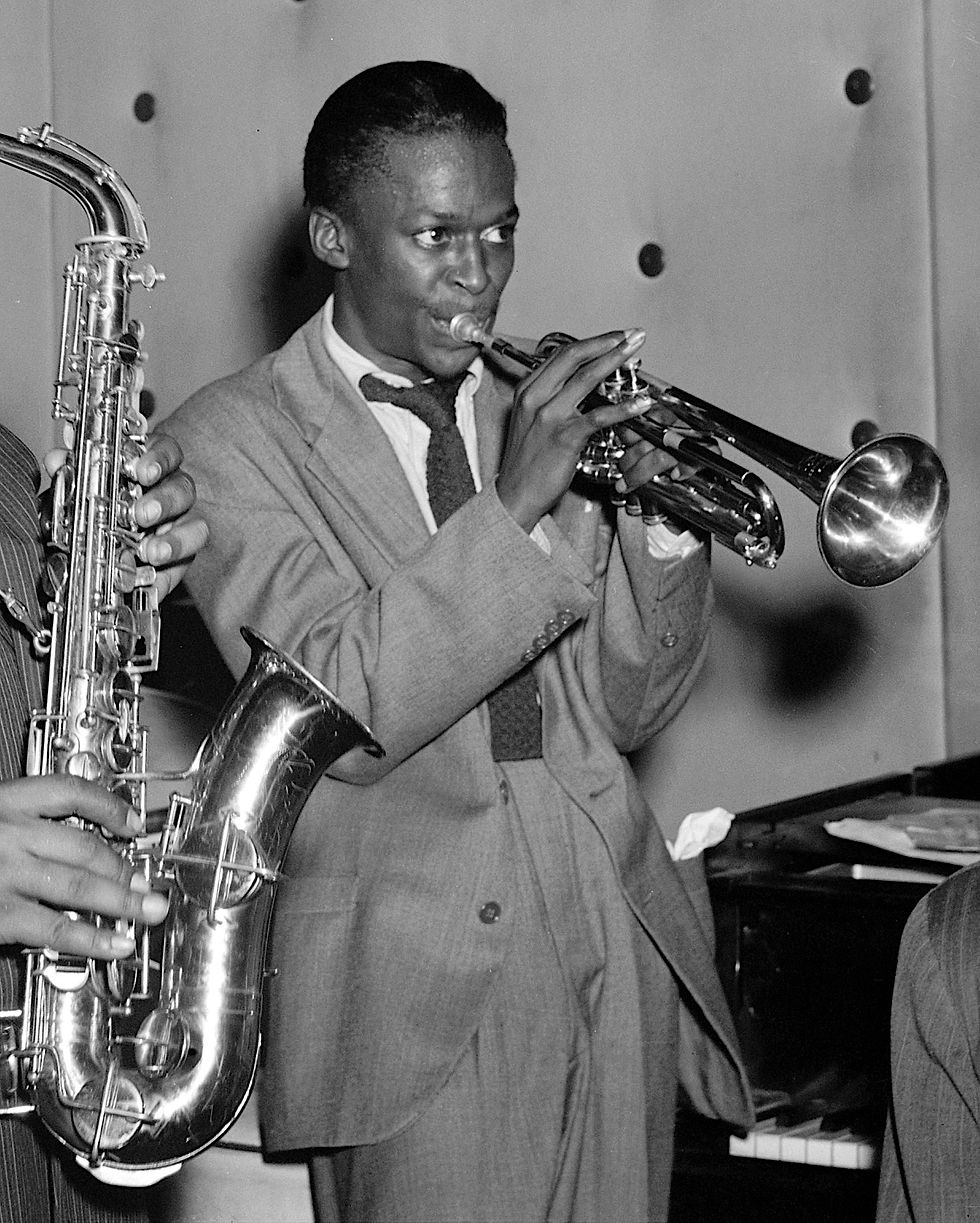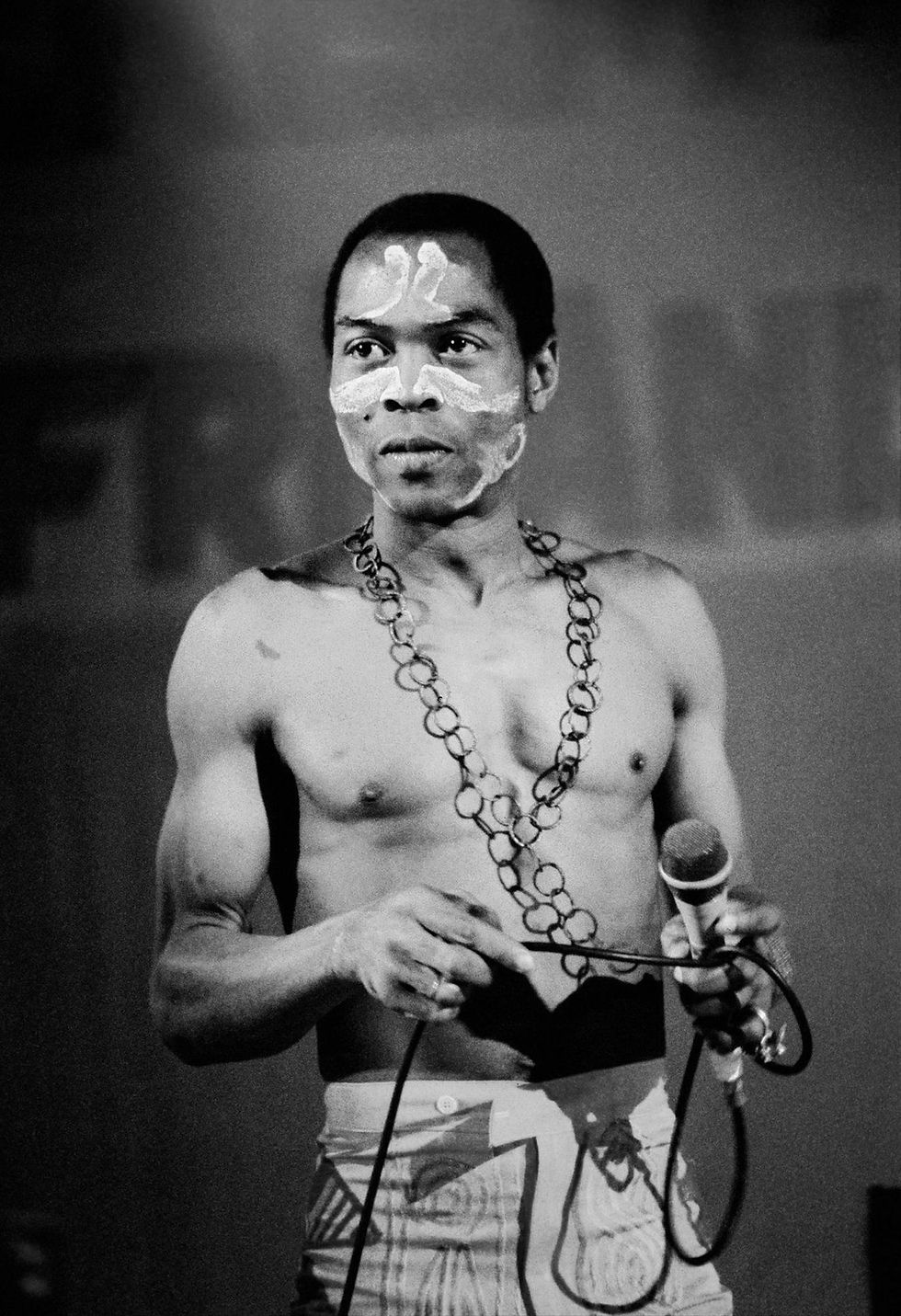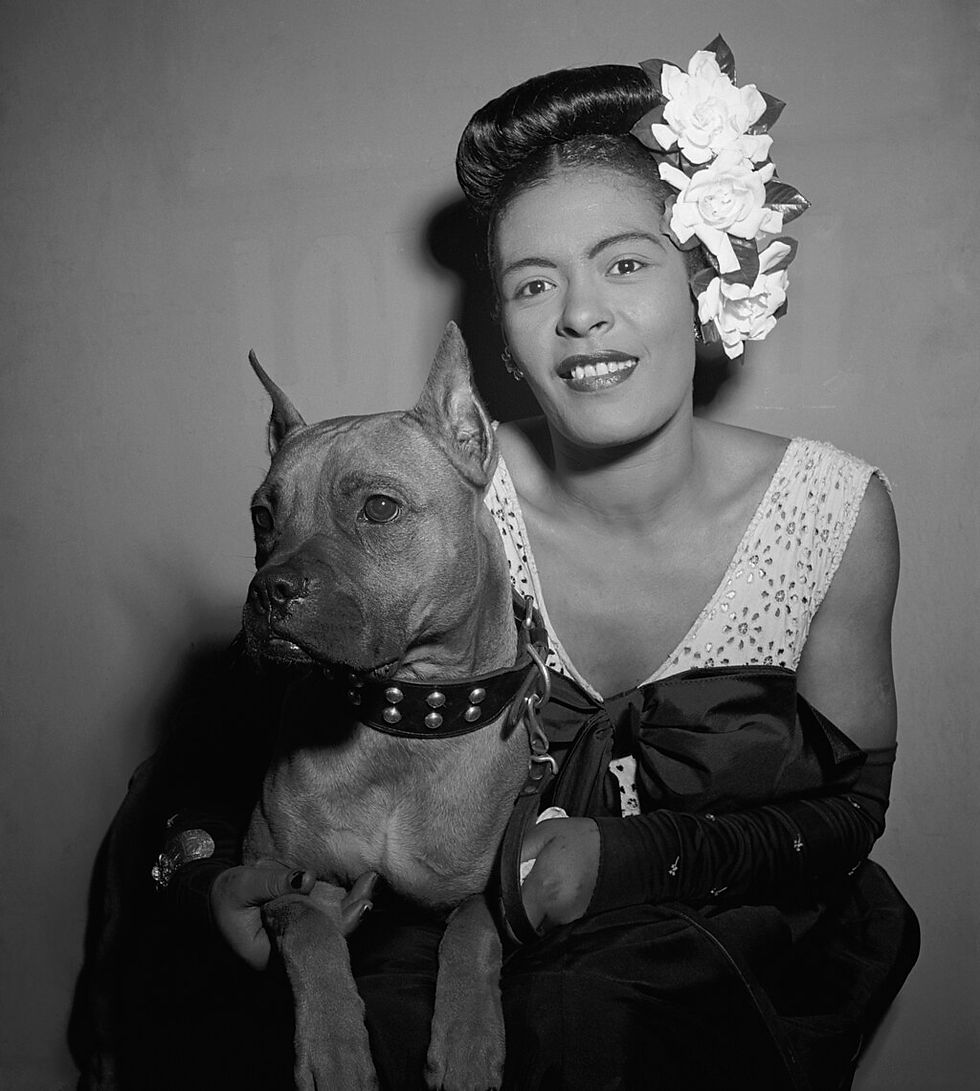12 PIONEERING JAZZ ARTISTS WHO REDEFINED THE GENRE
- Denholm Hewlett
- May 2, 2024
- 12 min read
Updated: Aug 15, 2024
Jazz isn’t just music; it’s a dynamic tapestry of sound, culture, and rebellion that’s been shaping our musical landscape for over a century. In celebration of International Jazz Day, let’s take a journey through the lives and legacies of twelve groundbreaking jazz artists who pushed the boundaries of creativity and sonic expression.

L'orchestre de jazz The Jazz Messengers en concert à Plougonven (Bretagne, France) en 1985
Dorothy Ashby (1932-1986)
Dorothy Ashby wasn’t just a brilliant harp player; she was a trailblazer. In a male-dominated industry, Ashby defied conventions and broke down barriers as one of the first female jazz harp players. Over a career spanning three decades, she redefined what the harp could do, blending jazz, soul, Eastern influences, and classical music into a mesmerising fusion of sound across eleven majestic albums.

Her seminal album "Afro-Harping" (1968) is a testament to her innovation, featuring tracks like “Soul Vibrations” and “Little Sunflower” that showcase her dextrous playing style and infectious groove.
Her 1970 album, ‘’The Rubáiyát Of Dorothy Ashby”, showcases her talents as a musician, composer and vocalist. Inspired by an 11th-century collection of Persian poetry by Omar Khayyám, this esoteric gem broke new ground, incorporating a hypnotic mixture of lush arrangements and intricate melodies, with Ashby playing both harp and the Japanese Koto. The album’s stand-out piece is arguably "The Moving Finger", which exemplifies her virtuosity, stunning arrangements and compositional style.
Sun Ra (1914-1993)
“In my music, I speak of unknown things, impossible things, ancient things, potential things.”

American jazz musician Sun Ra in a publicity photo promoting the 1973 reissue of his album The Magic City through Impulse! Records and ABC/Dunhill Records.
Sun Ra was a cosmic visionary. Drawing from jazz, space-age imagery, and Egyptian mysticism, Sun Ra created a musical universe that transcended genre and convention. An early adopter of electronic instruments and synthesisers, he was fascinated by the possibilities of electronic sound manipulation and used it to create otherworldly textures in a blend of jazz, blues, classical, and traditional African music.
In the late 1930s, Sun Ra claimed to have had a transformative spiritual experience in which he was taken to the planet Saturn. This informed a philosophy emphasising the power of music as a force for spiritual enlightenment and cosmic consciousness. As a self-proclaimed extra-terrestrial, his mission was to spread messages of peace, harmony, and unity on Earth. Through his fusion of African mythology and cultures with science fiction, technology, and the cosmos, he became a pioneer of Afrofuturism – a creative legacy that inspired artists including Parliament-Funkadelic and Lonnie Liston Smith, and more recently the likes of Madlib, J Dilla, The Alchemist, and MF DOOM, who have all sampled his work.
During the mid-1950s, Sun Ra and his ensemble, the Arkestra, crafted mind-bending live performances featuring elaborate costumes and vibrant theatrics that transported audiences into unknown realms of sonic expression.
A prolific creator, Sun Ra released over one hundred albums encompassing a wide range of styles and genres from traditional jazz and blues to avant-garde experimentation and electronic music. Albums like "The Heliocentric Worlds of Sun Ra" (1965), "Space Is the Place" (1973), and "Lanquidity" (1978), encapsulate his adventurous spirit and dynamic approach to making music.
Miles Davis (1926-1991)
“A painting is music you can see, and music is a painting you can hear”

No list of pioneering jazz artists would be complete without “The Picasso of Jazz”. A visionary trumpeter, composer, and bandleader, Miles Davis was a monumental figure in the jazz world who continually sought to reshape the genre. He rose to prominence in the 1950s as a member of the bebop movement before spearheading almost every major jazz innovation of the late 20th century. An illustrious career spanning four decades saw him release over sixty albums, including “Kind of Blue” (1959), a timeless masterpiece that birthed the era of “Cool Jazz” characterised by relaxed tempos, understated dynamics, and sophisticated harmonies.
In the early 1970s, Davis embarked on a radical departure from traditional jazz, incorporating an experimental mixture of rock, funk, jazz and avant-garde styles that became known as Jazz Fusion. He was also the first jazz musician to electrify his trumpet and embrace the use of electronic pianos and instruments on albums such as “In A Silent Way” (1969) and Bitches Brew (1970), the latter showcasing his fearless spirit and restless creativity that continues to inspire musicians today.
Hugh Masekela (1939-2018)
“My biggest obsession is to show Africans and the world who the people of Africa really are”.

Hugh Masekela - photo by Jacob Crawfurd
Hugh Masekela was more than just a dynamic trumpeter, singer, songwriter; he was a voice for freedom. As the “Father of South African Jazz”, Masekela used his music as a tool for socio-political activism against the apartheid regime that exiled him from his homeland for 30 years.
Borrowing from a myriad of genres, including afrobeat, disco, afropop, house, kwaito, and hip-hop, albums such as "Grazing in the Grass" (1968), became international hits, weaving his infectious blend of jazz, funk, and African rhythms into a vibrant tapestry of sound. Another of the most stunning projects from his vast discography is 1972’s ‘Home Is Where the Music Is’, which serves as an excellent introduction to his oeuvre, while "Stimela" (1974) is a poignant reflection on the emotional plight of African mineworkers, showcasing Masekela’s ability to combine music with social commentary.
Mulatu Astatke (1943- )
“We call it ‘freedom' in music’. That’s what Ethio Jazz is all about”.

Mulatu Astatke met zijn achtkoppige band, Transition Festival Utrecht, 8 April 2017.
Mulatu Astatke is an innovative Ethiopian musician, vibraphonist, band leader, composer, and arranger, widely regarded as “the Father of Ethio-Jazz”. Astatke formally trained as a musician in London, New York and Boston during the 1960s, immersing himself in the international sounds of Caribbean and Arabic music, funk, soul, jazz, reggae, and Latin grooves, before returning to Ethiopia to create his own signature style of music and introducing Ethiopian music to the world stage.
Album’s like "Mulatu of Ethiopia" (1972) and “Éthiopiques, Vol. 4: Ethio Jazz & Musique Instrumentale (1969-1974)” showcase his hypnotic grooves and soulful improvisations, bridging the gap between cultures and inspiring a new generation of artists to explore the intersection of jazz and African music.
Fela Kuti (1938-1997)
“The secret of life is to have no fear”.

Fela Kuti is the king of Afrobeat. More than just a musician, he was a cultural icon, political activist, and revolutionary thinker. Fela's musical journey began in the late 1950s when he travelled to London to study music. There, he was exposed to the sounds of jazz, funk, and highlife, which would later influence his own music. Upon returning to Nigeria, Fela formed his band, Africa '70, with drummer Tony Allen, and began blending traditional African rhythms with elements of African American jazz, funk, and soul, to create a new genre. Fela’s 1969 Los Angeles recordings exhibit his earliest developments of this signature sound.
Fela’s music is known for its explosive energy, infectious rhythms, thundering grooves, booming horn sections, socially conscious lyrics, and electrifying live performances. His musical output was often a direct response to the political climate in Nigeria. Music was his weapon of choice to attack authority and criticise government corruption, human rights abuse, and social injustices, both at home and in other countries around the world. During a long career, he produced around 50 albums of politically charged music that sought to enrage the Nigerian government, defend the universal struggles of the working class, and inspire both young and old to stand up for their human rights and fight against oppression.
In 1970, Fela established the Kalakuta Republic, a commune and recording studio in Lagos where he and his band could live and work outside the confines of mainstream society. The Kalakuta Republic became a haven for artists, activists, and freethinkers but it also drew the ire of the Nigerian government, which saw Fela as a threat to its authority. His album "Zombie" (1976), a scathing indictment of the Nigerian military, was banned by the government for its incendiary lyrics, but became an international sensation and solidified Fela’s reputation as a fearless musical activist.
In addition to his music, Fela's larger-than-life persona and charismatic stage presence made him a cultural icon. His eccentric style, which often included colourful costumes and elaborate stage productions, captivated audiences around the world and elevated him to legendary status. Fela's influence extends far beyond the realm of music. His fearless spirit and uncompromising stance against oppression has inspired countless individuals around the world to use their own platforms to speak truth to power. Today, Fela's music continues to resonate with audiences of all ages, proving that his message of freedom, equality, and resistance is as relevant now as it was during his lifetime.
Alice Coltrane (1937-2007)
“Music is within your heart, your soul, your spirit. When I sit at the piano, I just go within”.
Alice Coltrane was a pioneering jazz musician, composer, and spiritual leader known for her innovative approach to the piano, harp, and composition. Her life and legacy are marked by a remarkable journey of musical exploration, spiritual discovery, and artistic evolution. In 1965, she married acclaimed saxophonist John Coltrane, with whom she would collaborate both musically and spiritually until his death in 1967. During their brief but intense partnership, Alice played piano in Coltrane's band and contributed to some of his most acclaimed recordings, including "A Love Supreme" (1965) and "Ascension" (1966). After John’s passing, Alice experienced a profound spiritual awakening that would shape the rest of her life and career. She became deeply interested in Eastern philosophy, meditation, and spirituality, incorporating these influences into her music and her personal life.
Following her spiritual awakening, Alice began to explore new musical territories, blending elements of jazz, Indian classical music, and Western classical music into her own unique sound. Albums like "Journey in Satchidananda" (1971) and "Ptah, the El Daoud" (1970), showcase her ability to create immersive musical landscapes that evoke a sense of transcendence and inner peace. Alice’s music continues to uplift and inspire, reminding us of the power of music to heal and transform.
Wayne Shorter (1933-2023)
“The word ‘Jazz’ means to me, ‘I dare you. Lets jump into the Unknown!”

American jazz saxophonist Wayne Shorter in 2006.
Wayne Shorter was a beloved saxophonist, bandleader, and composer. A towering figure in jazz music for over six decades, he collaborated with some of the genre’s biggest names and pioneered new approaches to improvisation and composition. Shorter's rise to prominence began in the late 1950s when he joined Art Blakey's band, The Jazz Messengers. In 1964, Shorter was recruited to the Miles Davis Quintet, where he formed an unrivalled partnership with Davis and became an integral part of one of the most influential jazz ensembles of all time. Many of his solo compositions, such as "Footprints" and "Nefertiti," have become jazz standards, admired for their harmonic complexity, melodic beauty, and innovative spirit. Shorter’s album "Speak No Evil" (1966), featuring compositions like the title track and "Infant Eyes," is a masterpiece of modern jazz, showcasing his ability to blend tradition with innovation.
In 1970, Shorter formed the landmark jazz fusion group “Weather Report” with keyboardist Joe Zawinul. Together, they continued to push the boundaries of jazz, incorporating elements of rock, funk, and electronic music into the band's sound. The group’s music is revered for its intricate compositions, virtuosic improvisation, and an innovative use of synthesisers and electronic effects. Albums like "Heavy Weather" (1977) and "Black Market" (1976) became classics of the jazz fusion genre, earning the band widespread acclaim and commercial success. The influence of “Weather Report” can still be heard today in the work of countless jazz and fusion artists, making them one of the world’s most important and enduring groups in the history of jazz.
Shorter also led numerous other acclaimed ensembles and collaborations, recording over 20 albums as a bandleader that explored a wide range of musical styles and concepts. He also collaborated with a diverse array of artists outside of jazz, including Joni Mitchell, Steely Dan, and Herbie Hancock, further expanding his musical horizons and influence. Aside from music, Shorter is known for his deep interest in philosophy, spirituality, the human condition, and using music as a means of spiritual expression and connection. Last year, a few months after his passing, the Brad-Pitt produced three-part documentary series, “Wayne Shorter: Zero Gravity”, was released, depicting a different period of Shorter’s life and music.
João Gilberto (1931-2019)
João Gilberto is the father of bossa nova. A reclusive Brazilian guitarist and singer-songwriter, Gilberto's music fuses samba rhythms, jazz harmonies and Brazilian melodies, and is characterised by gentle rhythms, intimate vocals, and intricate guitar playing. With his album "Chega de Saudade" (1959), Gilberto introduced the world to a new sound and laid the foundation for a musical revolution.
Gilberto went on to collaborate with American saxophonist, Stan Getz, in 1964’s “Getz/Gilberto”, arguably the most famous and beloved bossa nova album of all time. Tracks like "Desafinado", “The Girl from Ipanema”, and "Corcovado", showcased Gilberto's mastery of the genre and his ability to capture the essence of Brazilian music for a global audience. His lasting influence can be heard in the work of numerous artists not only in jazz but also pop, rock and beyond, making him one of the most important figures in the history of Brazilian music.
Gil Scott-Heron (1949-2011)
“The revolution that takes place in your head, nobody will ever see that”./

Gil Scott-Heron.
Gil Scott-Heron was a poet, musician, and activist who left an everlasting legacy on the landscape of American culture. He is often referred to as the "Godfather of Rap" for his pioneering spoken word performances and socially conscious lyrics, which addressed issues of race, politics, and social justice. Heron’s poignant 1971 debut, “Pieces of a Man”, features the proto-rap track, “The Revolution Will Not be Televised”, an incisive critique of mass media and consumer culture that became an anthem for the civil rights and black power movements, and solidified his reputation as a voice of the people.
In the 1970s and ‘80s, Scott-Heron released a series of acclaimed solo projects as well as collaborative albums with musician and songwriter Brian Jackson including, “Bridges: (1977), “Secrets” (1978), and “Reflections” (1981). Heron’s music blended elements of jazz, blues, soul, funk, disco, and spoken word poetry into its own introspective and sophisticated sound; a raw style characterised by its gritty urban realism, soulful grooves, and powerful lyrical content. Iconic songs like "Winter in America," “Angel Dust”, "The Bottle," and "Home is Where the Hatred Is", addressed issues of poverty, addiction, and systemic injustice with a raw honesty and compassion. Heron's impact on music and activism cannot be overstated. His legacy lives on in the work of musicians, poets, and activists who continue to draw inspiration from his words and music.
Lonnie Liston Smith (1940-)
Lonnie Liston Smith is an accomplished pianist and composer known for his distinctive fusion of jazz, funk, soul, gospel and Eastern spirituality. Influenced by the teachings of metaphysical philosopher and musician, Sun Ra, Smith infused his compositions with elements of spiritualism, transcendence, and cosmic consciousness. His music often featured expansive, hypnotic grooves, mesmerising chords and melodies that aimed to elevate listeners to a higher plane of existence. The intoxicating tranquillity of tracks like “Summer Nights”, “Sunset”, and “Goddess of Love”, are prime examples of his immersive brand of jazz fusion; euphoric and soothing tracks that transcend time and space.
After playing in Miles Davis’s band for several years, Smith formed his own band, the Cosmic Echoes, in early 1970. This became his primary musical outlet for the next decade. Albums such as "Astral Travelling" (1973), "Expansions" (1975), and particularly "Visions of a New World" (1975), received critical acclaim and spawned several hit singles, including the title track of "Expansions". Smith's music found a wide audience among jazz aficionados and fans of funk and soul music alike. He continues to perform and record music to this day, collaborating with a diverse array of artists and exploring new avenues of expression. His legacy as a mystical musician, composer, and bandleader remains strong, with his music continuing to captivate and inspire audiences around the world.
Billie Holiday (1915-1986)
Billie Holiday, also known as Lady Day, is one of the most iconic and influential jazz vocalists of all time. After a tumultuous upbringing, Billie began singing in nightclubs in Harlem in the early 1930s. The unique timbre of her voice with its emotive phrasing and unparalleled ability to convey raw emotion made her a legend in the music world and beyond. It was a vocal style deeply rooted in the blues, with a distinctive, smoky tone and a penchant for bending notes and stretching phrases in a way that conveyed profound emotion. Billie’s ability to convey pain, longing, and vulnerability through her singing set her apart from her contemporaries and made her a beloved figure among audiences around the world. Her recordings continue to be celebrated as some of the greatest in the history of jazz, and her influence can be heard in the work of generations of artists who followed in her footsteps.

Portrait of Billie Holiday and Mister, Downbeat, New York, N.Y., ca. Feb. 1947
Throughout her turbulent life, Billie faced numerous challenges, including poverty, family instability, addiction, and racism. Despite these hardships, she remained resilient, continuing to perform and record music until her untimely death at the age of 44. She recorded dozens of classic songs, including “Ghost of Yesterday” and “Crazy He Calls Me”, but is perhaps best known for "Strange Fruit," one of the first protest songs of the American civil rights movement, which cemented her legacy as a voice for social justice.
All of these remarkable jazz artists have left an eternal mark on music history, pushing the boundaries of creativity and innovation, and captivating audiences with their unique voices and creative visions. Their work continues to resonate across genres and generations, inspiring musicians and listeners alike to explore new realms of musical expression. These twelve incredible jazz pioneers are only the tip of the iceberg, so we’ve compiled a playlist to satisfy your souls!
Interested in reading more articles? Check out all our other pieces, and subscribe to our Substack for a weekly blog!



